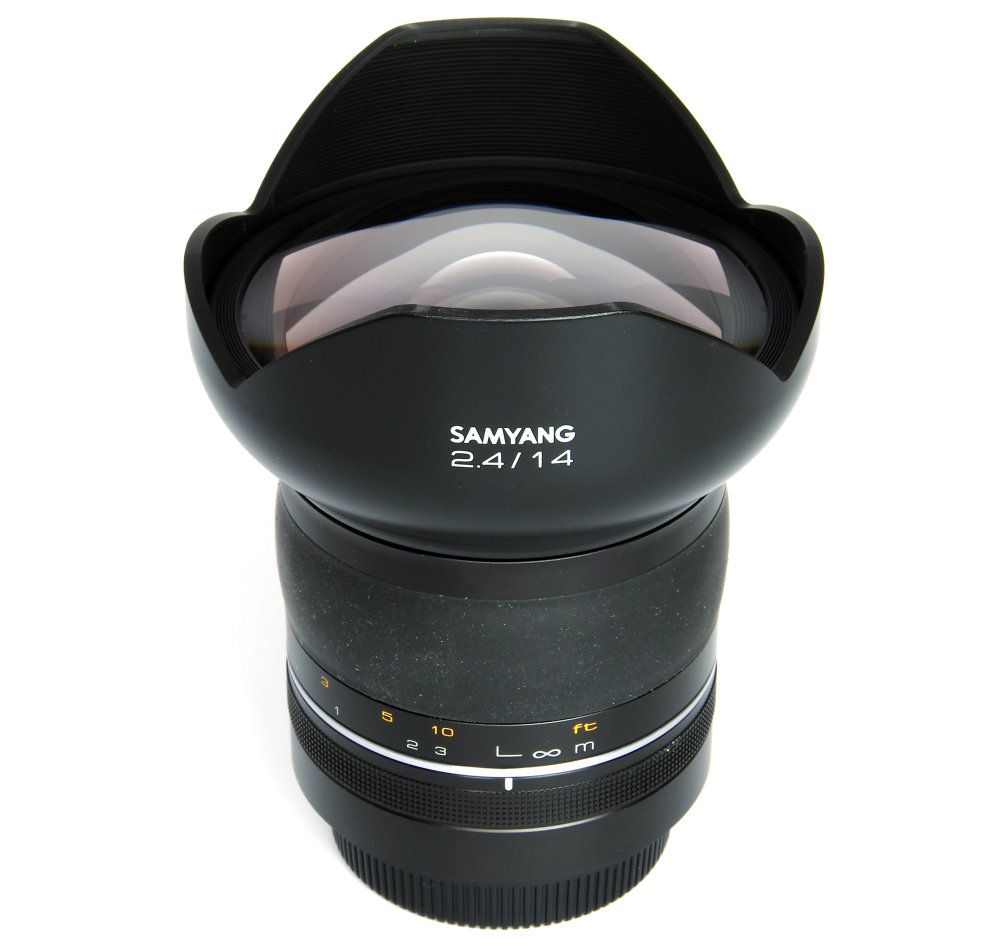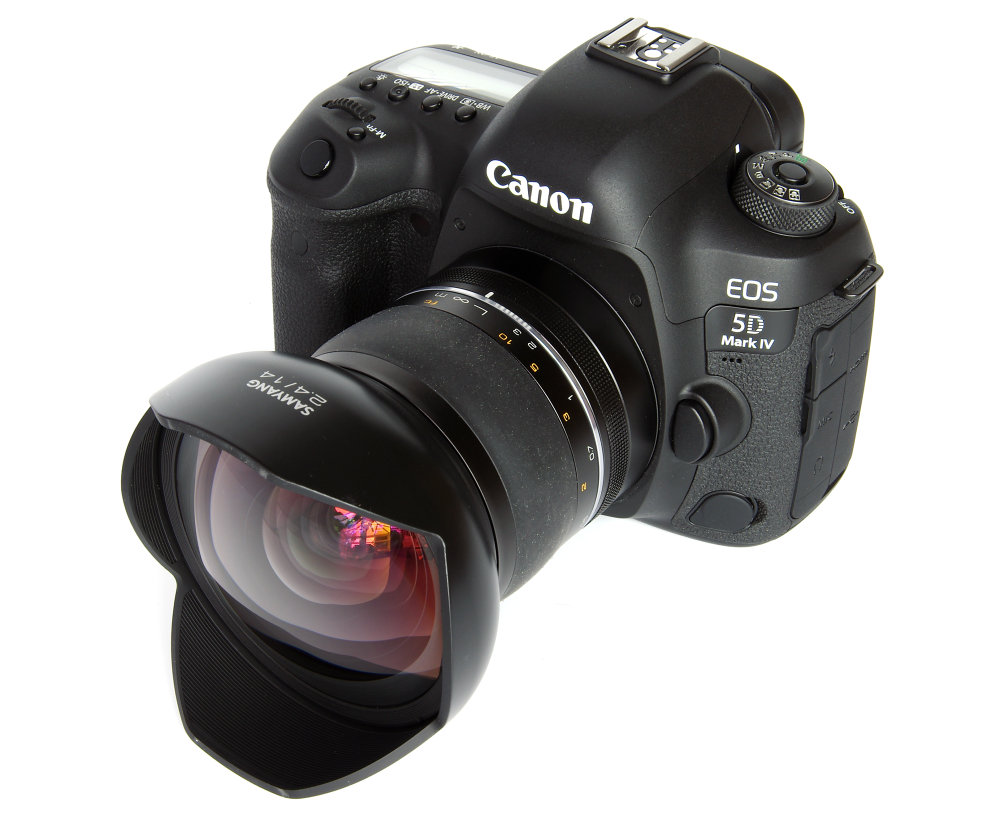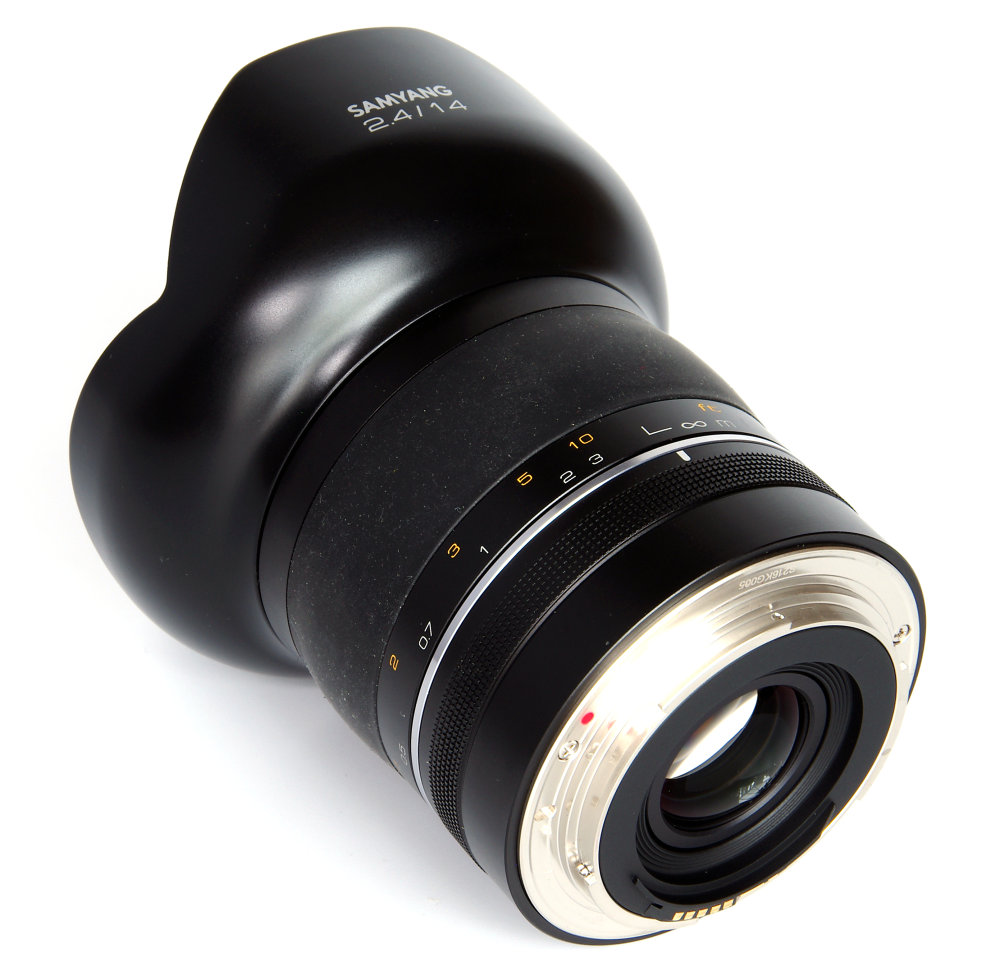Samyang Premium MF 14mm f/2.4 Review
Samyang Premium MF 14mm f/2.4 Handling and Features
Ultra wide lenses are easily spotted, with their huge front elements and domed glass. In this instance the petal lens hood is fixed and offers substantial protection to that vulnerable front element. There is no possibility of fitting filters. The large plastic lens cap clips on precisely and is unlikely to accidentally fall off. The bulbous appearance of the front of the lens is rather unusual, but the smooth contours are an attractive design. The lens is full frame, covering the 35mm-format. It is manual focus only, but it does have electronic contacts to control the aperture via the camera. The diaphragm has 9 blades, giving a rounder aperture to improve bokeh. The Canon EOS 5D Mark IV used in this review reported the f/2.4 maximum aperture as f/2.5, which seems to be a limitation of the information exchange between camera and lens. It is of no real detriment.
The focusing ring is wide and comfortable, being made of a rubberised material. The grip it affords is excellent, but this also means that dust and debris can easily attach themselves. This is not easy to remove. There are clear markings in feet and metres, but no depth of field scale. The latter is a pity as manually focusing ultra wide lenses can be tricky at best and some indication of the depth of field available would be useful. Focusing is down to 0.28m, a maximum magnification of 0.08x.
The metal mount is well made and bayonets firmly and smoothly into place. Available mounts are Canon EF, Nikon F and Sony E. The lens weighs in at 791g, but as it is well balanced on the camera body it does not seem to be overly heavy in use.
Optical construction is 18 elements in 14 groups, a highly complex formulation. There are 2 aspherical,1 hybrid aspherical, two ED (extra low dispersion) and 1 high refractive index elements.
All of this optical complexity would be for nought if we could not focus accurately and that may be a problem for some users. There is so much depth of field that judging the point of focus can be very tricky indeed. One solution is to use a small magnifier on the live view display. Another is to set the hyperfocal distance and not focus any further after that. It is essential that the dioptre adjustment on the camera eyepiece is correctly adjusted, but once it is then manual focusing is difficult but possible with care. For subjects that move it may be more appropriate to set an approximate distance and rely on depth of field to cover any small errors.
The view of the world that a 14mm lens offers is expansive and full of potential for wide, sweeping vistas. If used close up, then steep perspective adds a surreal look to our view. Being rectilinear, as opposed to a fish-eye, there is the opportunity to shoot wide interiors as well as exterior architecture. The Samyang 14mm f/2.4 handles very well for all these subjects and more.
Add your message
Please login here or if you've not registered, you can register here. Registering is safe, quick and free.
photodo Stats
428 MTF tests
74 in-depth photodo reviews
100+ users join each day
Help the lens community by reviewing or rating a lens today via our lens search
Latest Lens Reviews
- Chinon 28mm f/2.8 Vintage Lens Review
- Canon EF 70-200mm f/4L IS II USM Lens Review
- Samyang AF 85mm f/1.4 EF Review
- Sigma 70mm f/2.8 DG Macro Art Review
- Samyang AF 24mm f/2.8 FE Review
- Meike 50mm f/1.7 Review
- Tamron 70-210mm f/4 Di VC USD Review
- Lensbaby Burnside 35mm f/2.8 Review
- Asahi Super Takumar 50mm f/1.4 Review
- Asahi Super-Multi-Coated Takumar 135mm f/3.5 Review



